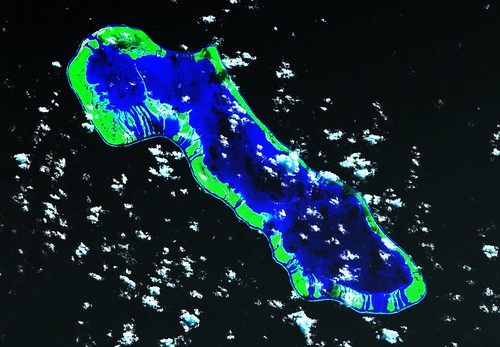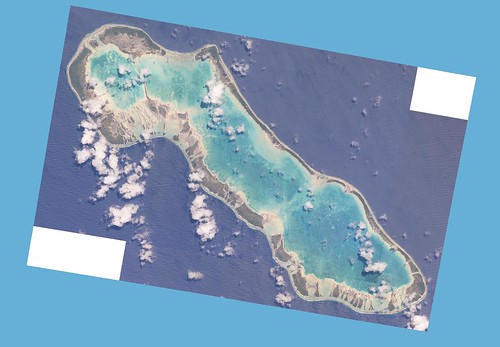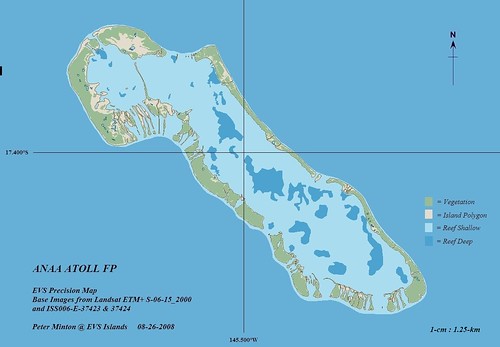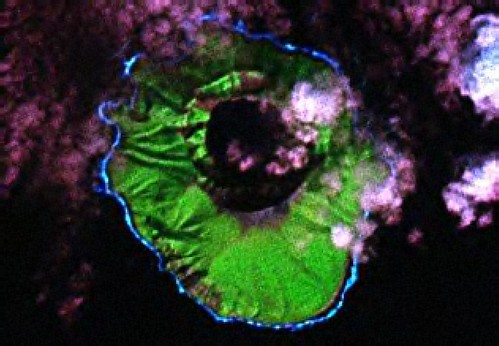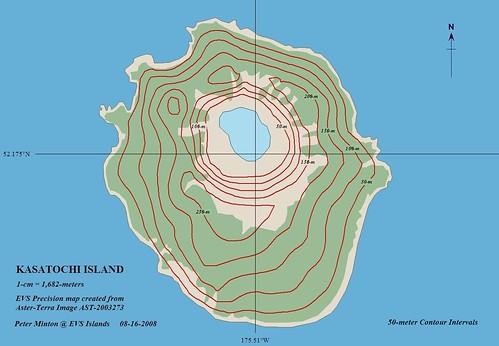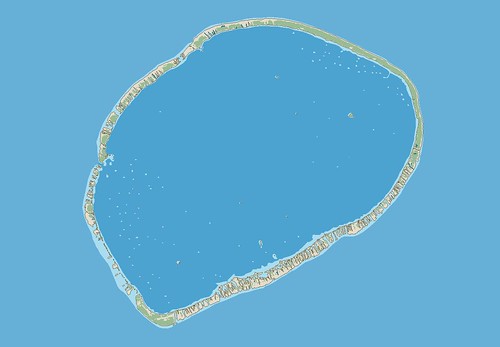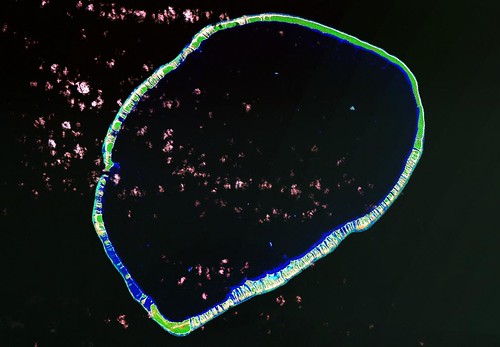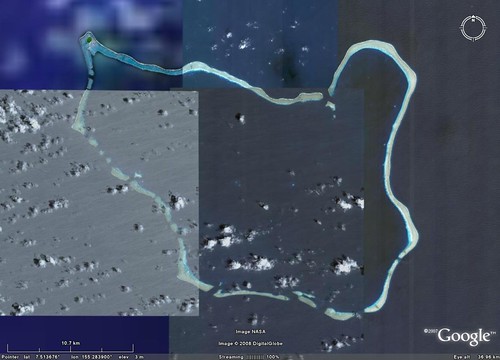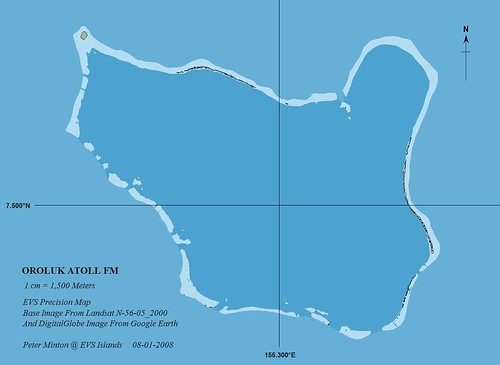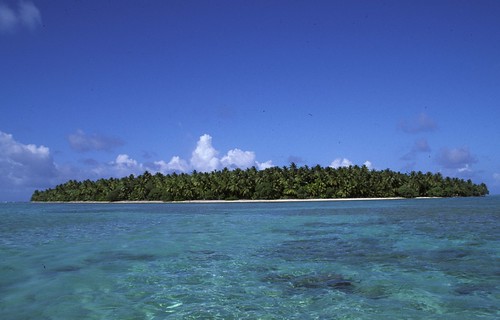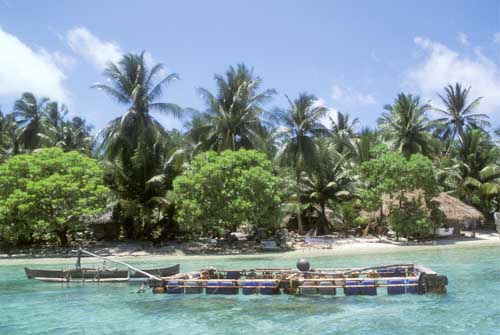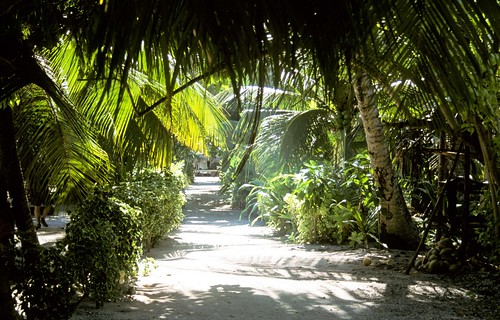There are times I wish to work with Landsat ETM+ imagery with attention to file size. Instead of 80 MBs of raster imagery, I would like to work with 4 MBs. Using Global Mapper Raster Image Export feature, I am able to get the imagery I need easily. The raster format I typically use is JPG2000. Let me share why.
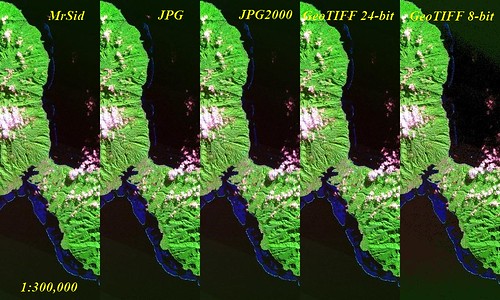
Raster Comparison (1:300,000)
I did a comparison of different raster formats July 2007. My previous comparison was poorly constructed and explained. I always meant to redo it. So here it goes. The first composite shows a portion of a MrSID, JPG, JPG200, GeoTIFF 24-bit and GeoTIFF 8-bit. At 1:300,000 scale the images are visibly indistinguishable. One appears to be just as good as the other.
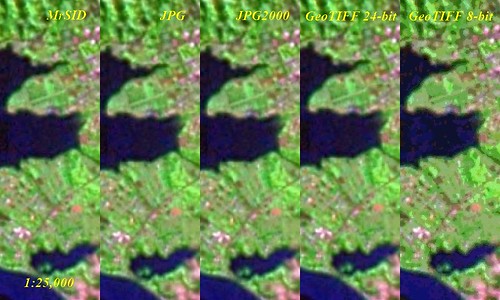
Raster Comparison (1:25,000)
At 1:25,000 scale, which is pushing the limits of the original image (MrSID format), the first 4 images are very similar in clarity. The GeoTIFF 8-bit image begins to lose color depth, as one would expect from 8-bit imagery as it uses fewer colors in its color palette.
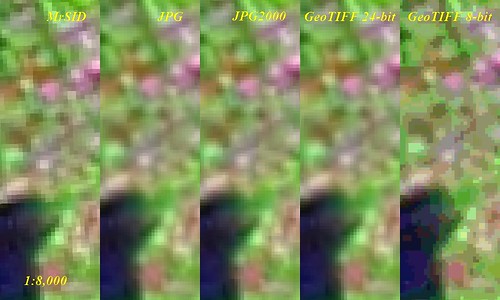
Raster Comparison (1:8,000)
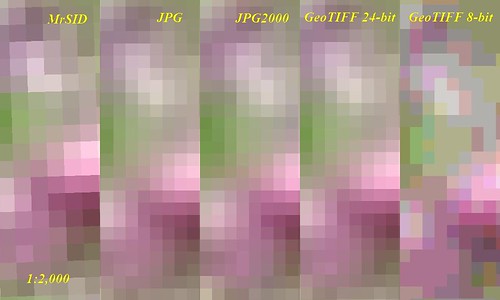
Raster Comparison (1:2,000)
Finally, lets push the images far beyond their intended usefulness. The three middle images, JPG, JPG2000 and GeoTIFF 24-bit are noticeably superior to MrSID and GeoTIFF 8-bit at this scale. It is at the 1:2,000 scale that pixel size difference shows up. The three middle images all carry the same sized pixels and range of colors. The GeoTIFF 8-bit image has the same pixel size as the middle images, but without the rich variety of colors. The MrSID image, our base image, has a larger pixel size. Its color palette is used to form the colors found in all of the other images.
Now for the kicker - size and number of files: MrSID - 80.4 MBs and 2 files; JPG - 21.5 MBs and 3 files; JPG2000 - 4.5 MBs and 3 files; GeoTIFF 24-bits - 121.8 MBs and 1 file; GeoTIFF 8-bit - 10.4 MBs and 1 file. Clearly, the JPG2000 packs the greatest image bang for your MBs. However, I understand that JPG2000 is not widely used. If you are able to use it, do so as it gives you quality imagery in a compressed package. If you are not able to use JPG2000 format and you do not require working at 1:50,000 or lower, the GeoTIFF 8-bit works quite well. I happen to prefer JPG as my second choice after JPG2000. At twice the size of GeoTIFF 8-bit imagery, it is still a reasonably sized file to work with in lieu of MrSID. GeoTIFF 24-bits is far too large compared to the other three raster formats. Last, but not least is the MrSID format. It is my base imagery. The four other raster images were derived from my Landsat ETM+ image in MrSID format.
Hopefully, this raster comparison is both informative and helpful. If nothing else, the raster comparison images are pretty slick composites giving you side-by-side visible examples of these 5 popular raster formats.
Enjoy!
